Episodes
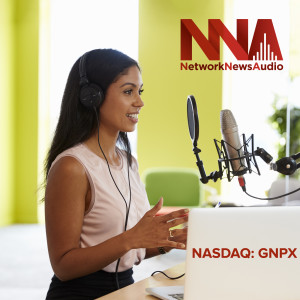
Friday Mar 29, 2019
Friday Mar 29, 2019
Pharmaceutical companies are now employing advanced medical breakthroughs and new technologies, including gene therapies and nanoparticle engineering, to fight every type of cancer.
- Gene therapies are being developed to more effectively target the treatment of cancer.
- Non-small cell lung cancer (NCSLC) is the leading cause of cancer death.
- Genprex Inc. is advancing Oncoprex, shown to benefit lung cancer patients in early trials.
A multiplicity of potential breakthrough treatments to fight cancer are in varying stages of clinical development, and many are focused on the promise of advanced gene therapies. Genprex Inc. (NASDAQ: GNPX) is working to bring its potentially life-changing immunogene therapy, Oncoprex, to market. Pfizer Inc. (NYSE: PFE) just gained Food and Drug Administration (FDA) approval for TRAZIMERA(TM), and Tocagen Inc. (NASDAQ: TOCA) is studying Toca 511. Novartis AG (NYSE: NVS) scientists are exploring immunotherapy matchmaking. Other biotechnology companies such Audentes Therapeutics Inc. (NASDAQ: BOLD) are developing innovative gene therapy products for patients living with life-threatening rare diseases.
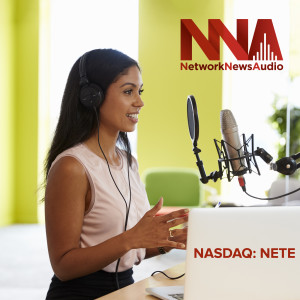
Friday Mar 22, 2019
Friday Mar 22, 2019
Payment processing companies are seeing impressive growth and may present attractive investment options by providing diverse services.
- Changing technology and spending habits are forcing payment systems to change.
- New providers are emerging to challenge banks and old providers.
- By providing diverse services, these providers cater to a range of specific markets.
- Adaptable technology helps to future proof these innovations.
Net Element (NASDAQ: NETE) is capitalizing on this growing space by providing an integrated payment solution that includes online, mobile and smart point-of-sale payments solutions for merchants in diverse industries. Square Inc. (NYSE: SQ) is working with trends such as bitcoin and in-app payment. PayPal Holdings Inc. (NASDAQ: PYPL), the big name in the sector, processes over $155 billion a year in mobile payments. The process is still connected to the cash economy through systems such as the ATMs of Euronet Worldwide Inc. (NASDAQ: EEFT). Services being developed include shopping without a checkout and online fundraising, areas Global Payments Inc. (NYSE: GPN) is working on.

Thursday Mar 14, 2019
Genprex Inc. (NASDAQ: GNPX) Developing Treatments to Fight Lung Cancer
Thursday Mar 14, 2019
Thursday Mar 14, 2019
After thirty years of development, gene therapy is seeing a surge of progress and profitability.
- Gene therapies tackle diseases by altering the genetic makeup of patients’ cells.
- Recent mergers and research developments make this a promising time to invest in the sector.
- Gene therapy companies are developing treatments for everything from cancer and HIV to skin diseases.
Genprex Inc. (NASDAQ: GNPX) is developing treatments to tackle lung cancer. Spark Therapeutics Inc. (NASDAQ: ONCE), which recently entered a merger agreement with the Roche Group, targets ailments such as retinal and neurodegenerative diseases. Dyadic International Inc. (OTCQX: DYAI) is focused on finding uses for a fungal-based technology that could bring treatments to market faster. TrovaGene Inc. (NASDAQ: TROV) uses cell-level treatments to tackle cancer through inhibiting a specific enzyme. The technology developed by Novartis AG (NYSE: NVS) uses specific viruses to deliver treatment for a range of illnesses.
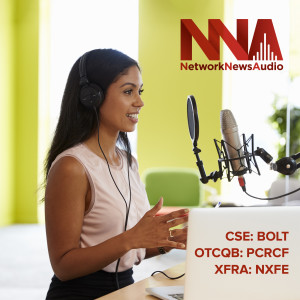
Friday Mar 08, 2019
Friday Mar 08, 2019
The need for nickel for batteries is driving greater investment in mines in Indonesia.
- Batteries play vital role in modern society, powering everything from phones to EVs.
- Pacific Rim Cobalt Corp. releases assay results confirming strong nickel, cobalt mineralization in Cyclops Project.
- As the world’s leading source of nickel, Indonesia is seeing serious investments.
Bolt Metals Corp. (CSE: BOLT) (OTCQB: PCRCF) (XFRA: NXFE) just announced assay results from its ongoing 2019 drilling campaign at the Cyclops, Nickel/Cobalt Project in Indonesia. VALE S.A. (NYSE: VALE) has also invested heavily in Indonesian nickel production. Glencore (OTC: GLNCY) both mines nickel and recycles it from old batteries. Lundin Mining Corporation (TSX: LUN) (OTC: LUNMF) produces nickel and its byproducts in four countries. Cobalt 27 Capital Corporation (TSX.V: KBLT) (OTCQX: CBLLF) has invested in a nickel mine in Papua New Guinea that, like Indonesia, offers good access to customers in Chinese industry.

Tuesday Mar 05, 2019
SinglePoint, Inc. (SING) Seizes Opportunity in the Solar Energy Industry
Tuesday Mar 05, 2019
Tuesday Mar 05, 2019
With climate change a hot topic and the Green New Deal providing a possible pathway for progress, solar power may be a more viable — and profitable — source of energy than ever before.
- Significant growth, ample resources point toward bright solar energy future
- SinglePoint acquisition provides phenomenal opportunity for company to establish industry foothold
- Experts predict solar could be main power source of choice in the coming
Recognizing a building interest in and support of renewable energy sources such as solar energy, smart companies are finding ways to establish a strong foothold in the sector. SinglePoint Inc. (OTCQB: SING) just signed an asset purchase agreement with Direct Solar and AI Live Transfers, providing what has been described as the Lending Tree model for solar business. First Solar Inc. (NASDAQ: FSLR) is working to complete construction and upgrades of its manufacturing facilities, enabling the company to produce its most advanced Series 6 solar panels. NextEra Energy Inc. (NYSE: NEE) was ranked by Forbes as No. 21 among the top 57 companies that globally change the world, in part because Florida Power & Light Company, one of NextEra Energy’s principal subsidiaries, is in the midst of one of the largest solar expansions in the world. NRG Energy Inc. (NYSE: NRG) was recently recognized at Smart Energy Decisions’ 2019 Innovative Summit for its landmark new sustainability product, Renewable Select. And in Virginia, Dominion Energy Inc. (NYSE: D) has launched a major bid to significantly increase its solar and wind energy generation under the state’s new Grid Transformation & Security Act.
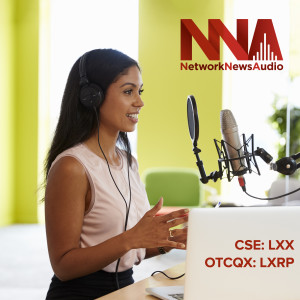
Tuesday Jan 22, 2019
Tuesday Jan 22, 2019
In a country where the life-threatening risks of smoking are well-known and 22 million smokers want to quit, a milestone agreement between a drug delivery platform innovator and one of the world’s largest producers and marketers of tobacco and cigarettes may offer tobacco users an alternative method of satisfying their needs along with greatly reduced risk.
- The quest for other alternatives to cigarettes has brought Big Tobacco to the door of biotech company Lexaria.
- The bioscience potential for nicotine delivery cannot be ignored and may deliver myriad benefits.
- Lexaria’s proprietary DehydraTECH technology makes the company an ideal partner.
Lexaria Bioscience Corp. (CSE: LXX) (OTCQX: LXRP) has announced that its wholly owned subsidiary Lexaria Nicotine LLC and one of the world’s largest tobacco companies have executed a definitive agreement to pursue innovation in oral, reduced-risk nicotine consumer products using Lexaria’s patented DehydraTECH™ technology. Other tobacco companies are also exploring alternative options for smokers. British American Tobacco Industries (NYSE: BTI) (OTC: BTAFF) is exploring vaping and using the move away from cigarettes to bolster its public image. Philip Morris International Inc. (NYSE: PM) has been campaigning to get international support for alternatives to cigarettes as well as developing its own alternatives, including heating tobacco. And Imperial Brands PLC ADR (OTCQX: IMBBF) (OTCQX: IMBBY) has established a stake in a cannabis biotech company as it explores the options for this alternative drug.

Tuesday Jan 22, 2019
Tuesday Jan 22, 2019
In a country where the life-threatening risks of smoking are well-known and 22 million smokers want to quit, a milestone agreement between a drug delivery platform innovator and one of the world’s largest producers and marketers of tobacco and cigarettes may offer tobacco users an alternative method of satisfying their needs along with greatly reduced risk.
- The quest for other alternatives to cigarettes has brought Big Tobacco to the door of biotech company Lexaria.
- The bioscience potential for nicotine delivery cannot be ignored and may deliver myriad benefits.
- Lexaria’s proprietary DehydraTECH technology makes the company an ideal partner.
Lexaria Bioscience Corp. (CSE: LXX) (OTCQX: LXRP) has announced that its wholly owned subsidiary Lexaria Nicotine LLC and one of the world’s largest tobacco companies have executed a definitive agreement to pursue innovation in oral, reduced-risk nicotine consumer products using Lexaria’s patented DehydraTECH™ technology. Other tobacco companies are also exploring alternative options for smokers. British American Tobacco Industries (NYSE: BTI) (OTC: BTAFF) is exploring vaping and using the move away from cigarettes to bolster its public image. Philip Morris International Inc. (NYSE: PM) has been campaigning to get international support for alternatives to cigarettes as well as developing its own alternatives, including heating tobacco. And Imperial Brands PLC ADR (OTCQX: IMBBF) (OTCQX: IMBBY) has established a stake in a cannabis biotech company as it explores the options for this alternative drug.

Friday Jan 11, 2019
Friday Jan 11, 2019
With global electric vehicle (EV) demand growth creating the potential for tight supplies in battery metals such as cobalt, multinational companies and industrialized nations are working to secure these critical metals as prices are projected to rise.
- The growing market for electric vehicles has led to much higher demand for battery metals such as cobalt, lithium and nickel.
- As the largest producer of EVs and largest consumer of battery metals in the world, China is aggressively looking to secure additional supplies of these critical minerals.
- Savvy companies are looking to lock in long-term supplies of battery metals.
Driven by the technological advances and environmentally friendly advantages offered by electric vehicles, the long-awaited EV revolution seems to be taking hold. Numerous global corporations are competing for access to limited supplies of battery metals. Prospective cobalt producer Pacific Rim Cobalt Corp. (OTCQB: PCRCF) (CSE: BOLT), which just released a detailed corporate update, looks to be in an ideal position to supply those corporations with cobalt. Major miners such as BHP Group Limited (NYSE: BHP), Freeport-McMoRan Inc. (NYSE: FCX) and VALE S.A. (NYSE: VALE) could play a role in growing the global supply of nickel, cobalt and lithium. Apple Inc. (NASDAQ: AAPL) took the extraordinary step of looking for direct supplies of cobalt last year, which shows how heated the battery metals market has become.

Friday Dec 21, 2018
Friday Dec 21, 2018
Amazon’s food and beverage category has posted $4.75 billion in sales thus far in 2018 and is the online retailer’s fastest growing segment.
- Amazon’s food and beverage category is the online retailer’s fastest growing segment.
- Coffee is the most popular subset of the company’s category.
- Youngevity International is one of the savvy companies seizing the opportunity to establish itself as a leader in the space.
A growing number of companies are working to stake their claim in the online giant’s coffee marketplace, for good reason: coffee is the most popular subset of Amazon’s food and beverage category. Youngevity International, Inc. (NASDAQ: YGYI), a leading omni-direct lifestyle company with emerging holdings in the coffee industry, announced recently that it would be getting in on the action with its wholly owned coffee manufacturing subsidiary, CLR Roasters. Starbucks Corp. (NASDAQ: SBUX), Keurig Dr. Pepper, Inc. (NYSE: KDP), and Nestle (OTC: NSRGY) were the top three sellers of coffee on Amazon in 2018, with year-to-date sales totaling more than $16.8 million, $12.6 million, and $11.2 million, respectively. The J.M. Smucker Company (NYSE: SJM) has also been focusing on increasing its presence in the premium and single-serve coffee space.

Thursday Nov 01, 2018
Thursday Nov 01, 2018
The move towards the adoption of electric vehicles (EV’s) along with solar and wind power generation has sparked interest in what could become the next super metal: vanadium. The United States doesn’t currently produce vanadium; however, United Battery Metals (OTC: UBMCF) (CSE: UBM) (FWB: 0UL) is in development of a world-class vanadium resource in Colorado. The vanadium redox battery (VRB) is a potentially revolutionary way to store energy, and major miners such as Largo Resources (TSX: LGO) (OTC: LGORF) may not be able to react quickly enough to offset the potential spike in vanadium demand. The adoption of VRB technology could provide a catalyst for the vanadium industry, a positive for companies such as Prophecy Development Corp. (TSX: PCY) (OTC: PRPCF), Vanadium One Energy Corp. (TSX.V: VONE),and First Vanadium Corp. (TSX.V: FVAN) (OTC: CCCCF), which are eager to serve this growing marketplace.

Friday Oct 26, 2018
SinglePoint, Inc. (SING) Providing Efficient, Specialized Delivery Services
Friday Oct 26, 2018
Friday Oct 26, 2018
Changes in the way people make payments and receive goods have created a new vision for the future of shopping.
- Increasingly efficient delivery systems bring goods to shoppers’ doorsteps.
- Electronic payment is making payment processing faster for consumers and businesses.
- Blockchain offers a potential route to further speed up payment systems.
- All of this will have consequences for the companies providing processing power.
SinglePoint, Inc. (OTCQB: SING) is involved in two of the biggest shopping technology trends, having developed both a delivery system and an electronic payment wallet. Those payments are made using cryptocurrency, produced through the mining operations of companies such as the Marathon Patent Group, Inc. (NASDAQ: MARA). PayPal Holdings, Inc. (NASDAQ: PYPL) remains a leader in electronic payment and has made acquisitions to ensure its position. The need for more memory and processing power increases demand for secure data storage, which is provided by companies such as Seagate Technology PLC (NASDAQ: STX). Even the eminent legacy brand International Business Machines Corporation (NYSE: IBM) is involved in these changes with its own blockchain payment system creation.

Thursday Oct 25, 2018
Victory Marine Holdings Corp. (VMHG) Celebrates Surge in Yacht Sales
Thursday Oct 25, 2018
Thursday Oct 25, 2018
With the global economy booming, the wealthy are making the most of their earnings by buying boats.
- Yacht sales are rising, with both new and pre-owned yachts in high demand.
- This trend is creating a boom for associated services such as brokerages, consultancies, financing, aftermarket extended warranties, and trailer manufacturers.
- Other boat-building businesses are also profiting, including yacht charters, boat rental clubs and other sea-based leisure activities that offer people a break from everyday life.
Savvy companies in the boating and yacht industry are recognizing these unparalleled opportunities and exploring ways to position themselves to make the most of them. Victory Marine Holdings Corp. (OTC: VMHG) has expanded its brokerage team and is looking into commissioning specially designed boats. America’s largest retailer of yachts and recreational boats, MarineMax, Inc. (NYSE: HZO), is expanding through the acquisition of companies in the northeast. Malibu Boats, Inc. (NASDAQ: MBUU) is maintaining its edge as a manufacturer through state-of-the-art design and new technology, including its award-winning docking trailer camera, as well as its latest acquisition of Pursuit Boats based in Ft. Pierce, Florida, for a sum of $100 million. The sale of a wide range of pleasure boats has led to financial dividends for Marine Products Corp. (NYSE: MPX). And Brunswick Corp. (NYSE: BC) has incorporated boats into a wider set of recreational holdings, developing new boats and new technology for a growing market.

Friday Oct 19, 2018
Friday Oct 19, 2018
First Cobalt Corp. (TSX.V: FCC) (OTCQX: FTSSF) is a vertically integrated North American pure-play cobalt company. First Cobalt has three significant North American assets: the Iron Creek Project in Idaho, the Canadian Cobalt Camp and the only permitted cobalt refinery in North America capable of producing battery materials.
The United States — and the entire world — have become critically dependent on cobalt, which is essential for rechargeable lithium ion (Li-ion) batteries to retain and discharge electricity.
- Cobalt deemed critical for United States security and economic prosperity
- Cobalt need expected to increase with soaring Li-ion battery demand
- U.S. business and military dependent on unstable cobalt sources; North American initiatives seek solutions
In May, cobalt was added to the United States’ list of minerals critical to its security and economic prosperity. Far beyond laptops, phones and electronic gadgets, the Li-ion battery is increasingly important for electric grid power storage and the revved-up electric vehicle market, as well as military applications such as tactical radios, thermal imagers, portable computing and turbine blades in gas turbines and aircraft jet engines.

Thursday Oct 18, 2018
Thursday Oct 18, 2018
Growing demand for powerful batteries, coupled with attempts to break China’s hold on the market, are leading to growth for Canadian lithium explorers.
- Lithium is essential for batteries used in personal electronics and electric vehicles.
- The recent rise of electric cars, together with faster than expected production of other electric vehicles, is creating a huge rise in demand.
- The market’s current top global suppliers are China and Chile.
- Emerging companies in Canada are starting work on alternative sources of lithium that could reduce reliance on these two countries.
One of the companies setting up new Canadian mines is QMC Quantum Minerals Corp. (OTC: QMCQF) (TSX.V: QMC) (FSE: 3LQ), which is using existing infrastructure in Manitoba to quickly get production up and running. Albemarle Corp. (NYSE: ALB), the world’s largest lithium manufacturer, has seen a surge in production that has almost doubled its earnings. Nemaska Lithium, Inc. (OTC: NMKEF) (TSX: NMX) is setting up mining and processing facilities in Canada as well as establishing supply agreements for when that work is completed. Sociedad Quimica y Minera S.A. (NYSE: SQM) is diversifying its lithium production, adding mining to brine extraction operations. All of this is driven by the work of companies such as Tesla, Inc. (NASDAQ: TSLA), whose electric cars are responsible for much of the demand.

Friday Oct 12, 2018
Friday Oct 12, 2018
Fashion trends are constantly changing. What’s popular one day may not be the next. Athletic wear styles rarely change, but athleisure wear is changing the entire market and creating lucrative new revenue streams for businesses that take part in this exciting new segment.
- Athletic wear sales have grown by a whopping 61 percent since 2007.
- Morgan Stanley forecasts sales of $355 billion by 2021, up from $290 billion now.
- Celebrity marketing partnerships boost companies’ social media profiles.
Athleisure wear revolves around a company like RYU’s ability to combine workout-ready clothing with comfort and global appeal. The modern athleisure market is all about creating apparel that is suitable for both high performance and daily use. RYU Apparel, Inc. (TSX.V: RYU) (OTC: RYPPF) is the newest threat to challenge the fashion monopoly controlled by conventional clothing conglomerates Nike, Inc. (NYSE: NKE); Gap, Inc. (NYSE: GPS); Adidas AG ADR (OTC: ADDYY)and Lululemon Athletica, Inc. (NASDAQ: LULU).

Friday Oct 12, 2018
Friday Oct 12, 2018
Supply anxieties and ethical concerns are clouding the otherwise seemingly sunny drive to automobile electrification. The world is already awash in mobile devices and is rapidly moving to enhanced electrical grids and electric vehicle (EV) ubiquity. However, the indispensable lithium-ion (Li-ion) battery — vital for gadgets, grid storage and electric propulsion — also requires cobalt to retain and discharge electricity. Lithium is plentiful and easily mined; cobalt is the conundrum that has manufacturers of battery-dependent products most worried.
- EV sales projected to explode to 30 million units by 2030.
- Cobalt — critical for Li-ion batteries — is nearly single-sourced and ethically challenged.
- New North American supply chains look to provide solutions
Most of the world’s cobalt supply comes from the Democratic Republic of Congo. The DRC has an unstable and historically corrupt government and an exceptionally poor human rights record; additionally, much of the country’s cobalt is mined by hand, often by children. Economically precarious, cobalt is virtually single-sourced. Currently about two-thirds of the world supply and half of all global reserves come from the DRC. Moreover, two years after Amnesty International’s scathing expose that showed exploited children mining cobalt, child labor is still being used to procure the mineral at so-called artisanal mines. No other comparable commodity is so dominated by a single source, creating enormous potential risk for EV makers. The troubling aggregate of political corruption, supply uncertainty, operational complexity and ethical opacity has delivered a clarion call to EV makers and spurred a global quest for secure and humanely sourced cobalt resources. At the vanguard of this search is First Cobalt Corp. (TSX.V: FCC) (OTCQX: FTSSF), a vertically integrated pure-play cobalt company with significant North American assets. Leveraging company assets and expertise in conjunction with the savvy of a legendary EV pioneer, First Cobalt is determined to be North America’s premier source of cobalt delivered to global electric automakers like Ford Motor Company (NYSE: F), B.M.W. AG ADR (OTC: BMWYY), Volkswagen AG (OTC: VWAGY) and Mercedes maker Daimler AG (OTC: DDAIF) (XE: DAI).

Monday Oct 08, 2018
Monday Oct 08, 2018
The growing popularity of cryptocurrencies has led to a surge in payment systems built on the blockchain technological revolution.
- Blockchain-based payments, which can be transacted directly between parties without bank involvement, allow those underserved by banks to access electronic payment.
- These blockchain-based payment systems are growing in popularity and prestige, with celebrity endorsements and appearances on the high street.
- They allow consumers to make fast payments and businesses to reduce payment processing fees.
The growing mainstream popularity of blockchain-based payments is reflected in a recent TV advertisement by SinglePoint, Inc. (OTCQB: SING) for its cryptocurrency wallet. Online retailer Overstock.com, Inc. (NASDAQ: OSTK) is also launching a digital wallet service that supports cryptocurrencies, following the path of Square Inc. (NYSE: SQ), which is integrating bitcoin into its mobile payment systems. Electronic payment giant PayPal Holdings, Inc. (NASDAQ: PYPL) has taken out a patent for a faster cryptocurrency payment system, reflecting the company’s interest in this sector. Meanwhile, the growth of blockchain is driving growth for NVIDIA Corporation (NASDAQ: NVDA), which produces graphic processing units used in cryptocurrency mining.

Thursday Oct 04, 2018
Thursday Oct 04, 2018
Despite short-term gyrations, the outlook for lithium continues to shine. Electric mobility is still only in its infancy. Revolutionizing how we commute and power our lives, the inevitable tsunami of electric vehicles and burgeoning demand for energy grid storage are driving lithium demand for the foreseeable future.
- The electric revolution is still in its infancy.
- Lithium demand expected to triple in next seven years.
- Lithium stocks could surge with demand.
- Junior miners offer big upside potential.
Anticipation of an exponential increase of electric vehicles coupled with expanding demand for lithium-ion (L-ion) batteries drove the lithium mining sector to reach all-time highs last year. Lithium shares swooned at the beginning of 2018 on a negative oversupply forecast by Morgan Stanley analysts. That forecast has since been widely debunked by a broad range of lithium industry experts and given only a 1 percent chance of happening. As the world inexorably advances into the new electric power paradigm, the lithium sector should experience an excellent decade and produce outsized returns. Demand for raw battery materials continues to grow at an unprecedented pace, and lithium miners could easily rack up further gains and reach new highs. With large upside potential, evermore attention is turning to junior miners such as QMC Quantum Minerals Corp. (OTC: QMCQF) (TSX.V: QMC) (FSE: 3LQ).The company is intent on building shareholder value through the acquisition, exploration and development of natural resource properties that contain either high-quality lithium or silver, gold, nickel, copper and zinc opportunities. Historically validated, QMC’s 100 percent-owned flagship project, the Irgon Mine Project,holds a potential motherlode of lithium. In addition, major lithium producers such as Albemarle Corporation (NYSE: ALB) and Sociedad Quimica y Minera S.A. (NYSE: SQM) plan production increases, and Nemaska Lithium, Inc. (OTC: NMKEF) (TSX: NMX) is also in the hunt to supply companies such as Tesla, Inc. (NASDAQ: TSLA) and myriad other end users seeking a secure supply chain.

Thursday Oct 04, 2018
Thursday Oct 04, 2018
Personalized treatment for advanced breast cancer is a massive global medical need. According to latest figures from the Centers for Disease Control, in the United States alone more than 41,000 women die from breast cancer each year. Hope is on the horizon, however, as innovative biomedical companies apply their research and technologies to bring personalized immunotherapies to market for this unmet medical need. Among these companies is BriaCell Therapeutics Corp. (OTC: BCTXF) (TSX.V: BCT), an immune-oncology-focused biotech company developing the first off-the-shelf personalized immunotherapy for advanced breast cancer. The company’s technology is based on a targeted immunotherapy regime that has seen encouraging results in clinical trials. Other biotechs in the personalized cancer immunotherapy space include Gilead Sciences, Inc. (NASDAQ: GILD), the parent company of Kite Pharma; Cellectis S.A. (NASDAQ: CLLS); Neon Therapeutics, Inc. (NASDAQ: NTGN); and Loxo Oncology, Inc. (NASDAQ: LOXO).
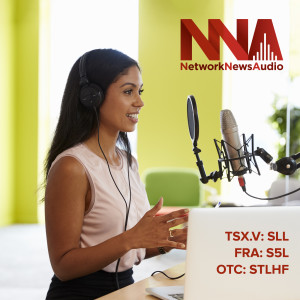
Thursday Sep 20, 2018
Thursday Sep 20, 2018
New manufacturers are joining the race to design electric vehicles, accelerating a revolution in the car market that could result in strong lithium demand as a battery ingredient. Standard Lithium (TSX.V: SLL) (OTC: STLHF) is one of several companies that are innovating to meet this demand scenario by developing new technology that could unlock a major supply source untapped in Arkansas. Major producers Sociedad Química y Minera de Chile (NYSE: SQM) and Albemarle Corp. (NYSE: ALB) have already got permission by the Chilean government to carry out major expansions in the Atacama Desert to expand supply for the EV market. MGX Minerals, Inc. (CSE: XMG)(OTC: MGXMF) is working to develop a means to separate minerals from oilfield waste in order to meet surging demand from EV manufacturers such as Tesla, Inc (NASDAQ: TSLA).

